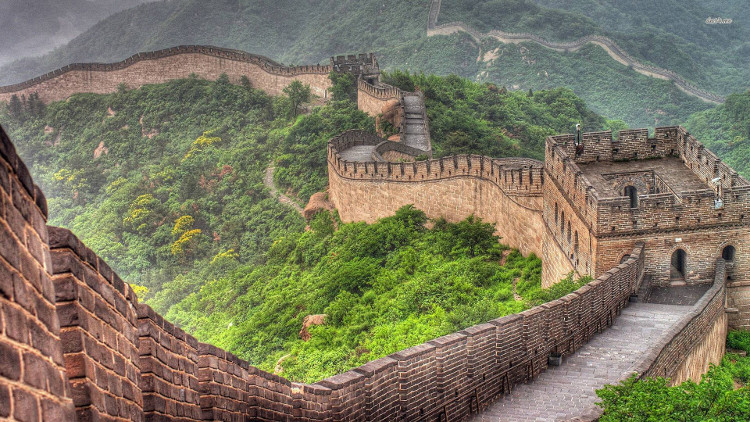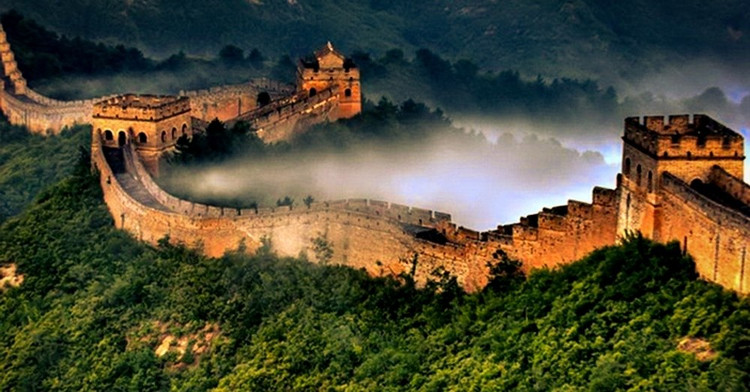The reason why the Great Wall of Thousand Years did not fall caused many people to be shocked
For thousands of years the wind and wind still stood and became the pride of the Chinese nation.
Over thousands of years of history, the Great Wall still stands firmly "racing with the monks'. Perhaps many people believe that this wall was built from rare and complicated materials so it is so sustainable. However, in fact, for the Great Wall to stand firm today, it is due to a special mortar made from glutinous rice - a very familiar food of Asians.
Glutinous rice mortar: The 'god' mortar helps the city to live forever with time
During the restoration of the castle wall in the capital of Xi'an, the researchers found it difficult to remove the mortar on the ancient bricks. When tested with chemicals, the scientists discovered that this medium reacts with reagents like sticky rice.

After thousands of years of wind and wind, the Great Wall still stood up, challenging time.
The results after infrared analysis also showed that the molecular structure is similar to sticky rice. Therefore, Chinese scientists have insisted that the thousand years of the Great Wall is not dumped all thanks to sticky rice mortar.
Studies show that, because sticky rice contains Amylopectin , while it is almost insoluble in water and has high adhesion. This is an important factor that makes sticky rice mortar hard and firm. It is possible that the ancients have recognized this characteristic of glutinous rice so it is included in the construction industry.

The reason for the thousand years of the Great Wall is not due to sticky rice.
According to studies, experts found that ancient builders mixed glutinous rice soup with heated limestone, adding water and other ingredients to create glutinous rice mortar. This structure is very solid and does not absorb water.
Zhang Binggy, a Chinese scientist, said that just glutinous rice is the first complex mortar in the world created from organic materials combined with inorganic materials. This special mortar is also one of the greatest technical innovations in history.
In addition to building walls, ancient people also used glutinous rice mortar to build large structures such as tombs, jade towers, etc. The buildings built with this mortar still exist, challenging together. time and stand even when affected by many earthquakes.
Typically, the ancient city walls were built in Nanjing, Xi'an and Huizhou under the Ming Dynasty, though undergoing 600 years of history, they still stood and never showed signs of subsidence and slump. In addition, when excavating ancient tombs was built in the Ming Dynasty, although using hoes, shovels or bulldozers, excavators, excavation still faces many difficulties because the walls are too strong.

Glutinous rice mortar is used to build walls, tombs, jade towers.
Although glutinous rice mortar is very solid but because sticky rice is one of the luxury products, it is not widely used. Before glutinous rice mortar came into being, construction mortar underwent many different generations.
Before the Shang Dynasty, the mixture of adhesives used in architecture was mainly made from dried straw mixed with mud. By the time of the Zhou Dynasty, new lime was gradually used instead.
In the South and North dynasties from the 5th century BC, lime, clay and sand were mixed together to form mortar called triad . Three ingredients are mixed in a certain proportion and after drying, they will become unusually solid. Since then, this mortar is commonly used and lasts until the 20th century.
Later, the ancients discovered that sticky rice also had an effective adhesive effect, so it was used as a construction material. After Tong, Nguyen, glutinous rice mortar has been widely used.
- Video: Two times the fall of the Great Wall
- The British discovered a new part of the Great Wall
- The 'missing' section of the Great Wall has been revealed after four decades
- Seeing the Great Wall from the universe: Fiction?
- Interesting facts about the Great Wall
- The Great Wall and the many secrets people think
- The interesting mystery about the two gates lies at the end of the Great Wall
- Scientific facts are mistaken (P1)
- The length of the Great Wall increased twice
- The most magnificent gates of the Great Wall
- 5 mysterious legends about the Great Wall
- Indian farmers are shocked when meteors fall between rice fields
 'Fine laughs' - Scary and painful torture in ancient times
'Fine laughs' - Scary and painful torture in ancient times The sequence of numbers 142857 of the Egyptian pyramids is known as the strangest number in the world - Why?
The sequence of numbers 142857 of the Egyptian pyramids is known as the strangest number in the world - Why? History of the iron
History of the iron What is alum?
What is alum?